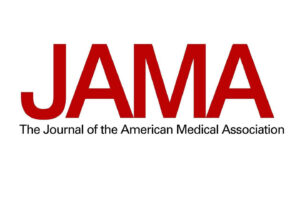
The views expressed are those of the author and do not represent the views of the SNF Agora Institute or Johns Hopkins University.
Author: Hahrie Han
Coronavirus disease 2019 (COVID-19) introduced stressors to mental health, including loneliness stemming from social isolation, fear of contracting the disease, economic strain, and uncertainty about the future. We fielded a national survey measuring symptoms of psychological distress and loneliness among US adults in April 2020 and compared results with national data from 2018.
Methods
We fielded the Johns Hopkins COVID-19 Civic Life and Public Health Survey from April 7 to April 13, 2020, using NORC’s AmeriSpeak Panel. AmeriSpeak is a probability-based panel designed to be representative of the US adult population. The panel is sourced from NORC’s area probability sample and from a US Postal Service address–based sample covering 97% of US households.1 The panel has a recruitment rate of 34% and includes approximately 35 000 members. The sample for the Johns Hopkins survey was drawn from this panel and the survey was administered online. NORC obtains informed consent prior to enrolling individuals in the panel. The Johns Hopkins Bloomberg School of Public Health institutional review board deemed this study not human participants research and waived informed consent.
We measured the prevalence of symptoms of serious psychological distress in the overall sample and among demographic subgroups using the Kessler 6 Psychological Distress Scale, with the validated measure of serious distress defined as a score of 13 or higher on the 0- to 24-point scale.2 We also measured the proportion of respondents who reported that they always or often feel lonely in response to the item “How often do you feel lonely?” with response options always, often, sometimes, rarely, and never.
We compared the prevalence of symptoms of serious psychological distress in April 2020 with an identical measure from the 2018 National Health Interview Survey (NHIS), which used the Kessler 6 scale among 25 417 adults aged 18 years or older in household interviews. The 2018 NHIS response rate was 64.2%.3
For each measure, we calculated proportions and 95% CIs using Stata version 15 (StataCorp). The Johns Hopkins and NHIS survey data were analyzed separately. Analyses of both data sets incorporated survey sampling weights to generate nationally representative estimates.
Results
The survey response rate was 70.4%, with a final sample of 1468 adults aged 18 years or older.
In April 2020, 13.6% (95% CI, 11.1%-16.5%) of US adults reported symptoms of serious psychological distress, relative to 3.9% (95% CI, 3.6%-4.2%) in 2018 (Figure). Among the subgroups examined, in April 2020, symptoms of psychological distress were highest among young adults aged 18 to 29 years (24.0% [95% CI, 16.3%-33.8%]), adults with household income of less than $35 000 per year (19.3% [95% CI, 14.2%-25.6%]), and Hispanic adults (18.3% [95% CI, 11.2%-28.3%]). The corresponding prevalence estimates for these 3 groups in 2018 were 3.7% (95% CI, 3.0%-4.6%), 7.9% (95% CI, 7.1%-8.6%), and 4.4% (95% CI, 3.7%-5.4%), respectively. The lowest prevalence of serious psychological distress among the subgroups examined in April 2020 was observed in adults aged 55 years or older (7.3% [95% CI, 4.8%-10.9%]). In April 2020, 13.8% (95% CI, 11.4%-16.6%) of US adults reported that they always or often felt lonely.
Discussion
The prevalence of reported symptoms of psychological distress among US adults was higher in 2020 during the COVID-19 pandemic than in 2018. This finding builds on prior research documenting psychological distress among health care workers responding to COVID-19.4
The measure of serious psychological distress derived from the Kessler 6 scale has been shown to accurately predict serious mental illness,2 suggesting acute distress during COVID-19 may transfer to longer-term psychiatric disorders. In April 2020, 13.8% of US adults reported that they always or often felt lonely. In comparison, a national survey using an identical measure of loneliness found that 11% of US adults reported always or often feeling lonely in April and May 2018.5 Because loneliness increased only slightly from 2018 to 2020, other factors may be driving psychological distress during the COVID-19 pandemic.
The NORC AmeriSpeak panel used probability-based recruitment consistent with best-practice standards for survey research,6 but results may be vulnerable to sampling biases. The degree to which US adults classified as essential workers during the COVID-19 pandemic were represented in the survey sample is unknown. While both surveys are designed to be nationally representative of US adults, the sampling and recruitment methods and mode of administration varied in the Johns Hopkins April 2020 and NHIS 2018 surveys. There is a potential for selection bias if individuals were more likely to respond to a survey about psychological distress in April 2020 vs 2018.
